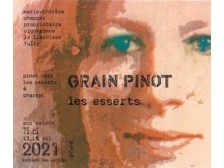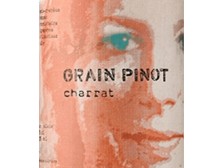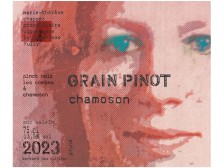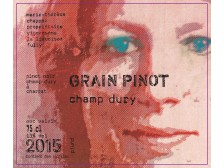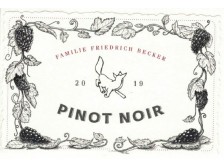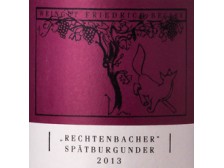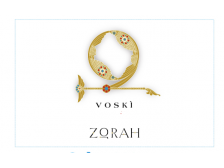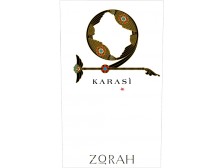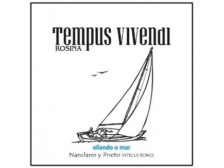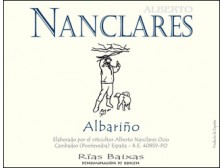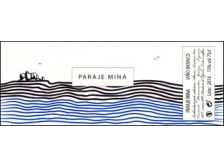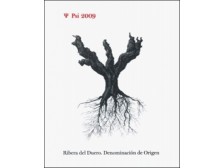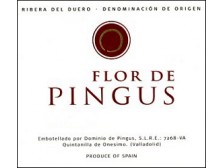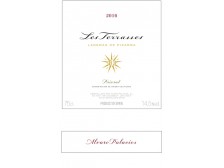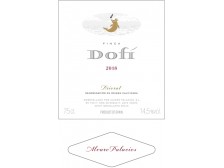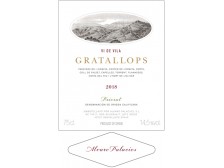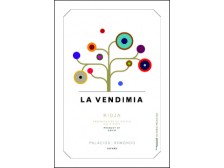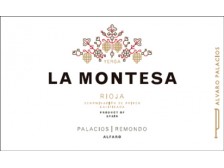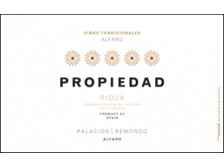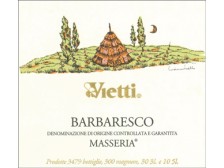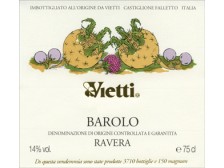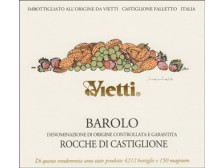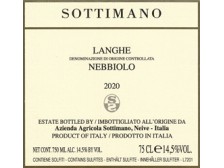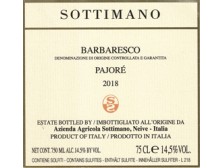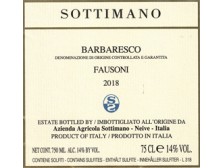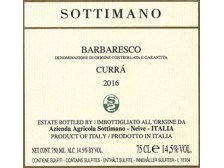Catalog
-
In 20 years, Ms Chappaz has become Switzerland's emblematic winemaker, following the example of Ms Bize-Leroy in Burgundy. In her 10-hectare vineyard on the south-facing slopes of Fully, she strives to give full expression to the typicity and authenticity of each grape variety through ultra-careful viticulture (biodynamic since 2003).
More- To keep or to drink:
- Wait 3 to 5 years
- Apogée:
- 2028-2039
-
In 20 years (first vintage in 1988), Mrs Chappaz has become the emblematic winemaker of Switzerland, like Mrs Bize-Leroy in Burgundy. In its 10 ha vineyard on the south-facing slopes of Fully, it seeks to express as well as possible the typicity and authenticity of each grape variety through ultra attentive viticulture (biodynamic since 2003).
Grain Pinot: parcel wines, 100% pinots noirs aged from 25 to 40 years, on limestone soil, aged 12 months in 100% new barrels. Chamoson, with its southern exposure, is the most appealing, while Charrat et Champ Dury, with their northern exposure (on the left bank of the Rhone), are fresher, more linear and tense.
More- To keep or to drink:
- Wait 3 to 5 years
- Apogée:
- 2028-2040
-
In 20 years (first vintage in 1988), Mrs Chappaz has become the emblematic winemaker of Switzerland, like Mrs Bize-Leroy in Burgundy. In its 10 ha vineyard on the south-facing slopes of Fully, it seeks to express as well as possible the typicity and authenticity of each grape variety through ultra attentive viticulture (biodynamic since 2003).
Grain Pinot: parcel wines, 100% pinots noirs aged from 25 to 40 years, on limestone soil, aged 12 months in 100% new barrels. Chamoson, with its southern exposure, is the most appealing, while Charrat et Champ Dury, with their northern exposure (on the left bank of the Rhone), are fresher, more linear and tense.
More- To keep or to drink:
- Wait 3 to 5 years
- Apogée:
- 2028-2040
-
In 20 years (first vintage in 1988), Mrs Chappaz has become the emblematic winemaker of Switzerland, like Mrs Bize-Leroy in Burgundy. In its 10 ha vineyard on the south-facing slopes of Fully, it seeks to express as well as possible the typicity and authenticity of each grape variety through ultra attentive viticulture (biodynamic since 2003).
Grain Pinot: parcel wines, 100% pinots noirs aged from 25 to 40 years, on limestone soil, aged 12 months in 100% new barrels. Chamoson, with its southern exposure, is the most appealing, while Charrat et Champ Dury, with their northern exposure (on the left bank of the Rhone), are fresher, more linear and tense.
More- To keep or to drink:
- Wait 3 to 5 years
- Apogée:
- 2028-2040
-
In 20 years (first vintage in 1988), Mrs Chappaz has become the emblematic winemaker of Switzerland, like Mrs Bize-Leroy in Burgundy. In its 10 ha vineyard on the south-facing slopes of Fully, it seeks to express as well as possible the typicity and authenticity of each grape variety through ultra attentive viticulture (biodynamic since 2003).
Grain Pinot: parcel wines, 100% pinots noirs aged from 25 to 40 years, on limestone soil, aged 12 months in 100% new barrels. Chamoson, with its southern exposure, is the most appealing, while Charrat et Champ Dury, with their northern exposure (on the left bank of the Rhone), are fresher, more linear and tense.
More- To keep or to drink:
- Wait 1 to 2 years
- Apogée:
- 2026-2038
-
In the very north of Alsace, close to the Franco-German border, Domaine Becker is paradoxically renowned, not for its Rieslings, but for its Pinot Noirs. Sheltered from the Atlantic storms by the northern Vosges mountains and on a subsoil of shell limestone, the region around Wissembourg offers an excellent terroir for Pinot, made even more favourable by global warming. Domaine Becker wines have the depth, richness and aromatic distinction of perfectly ripe Pinots, while remaining elegant. At the same price, they can stand up to comparison with the 1st growths of the Côte d'Or.
This cuvée Pinot Noir is a blend of the young vines (20 to 40 years old, not so young), juicy on the palate (fresh cherry), fresh and elegant with a hint of vivacity on the finish, like a Volnay village.
More- To keep or to drink:
- Ready to drink
- Apogée:
- 2025-2032
-
In the very north ofAlsace, close to the Franco-German border, Domaine Becker is paradoxically renowned, not for its Rieslings, but for its Pinot Noirs. Sheltered from the Atlantic storms by the northern Vosges mountains and on a subsoil of shell limestone, the region around Wissembourg offers an excellent terroir for Pinot, made even more favourable by global warming. Domaine Becker wines have the depth, richness and aromatic distinction of perfectly ripe Pinots, while remaining elegant. At the same price, they can stand up to comparison with the 1st growths of the Côte d'Or.
Cuvée Kammerberg, made from Pinots planted in 1967, is the flagship of the Becker range. Opaque in colour, it is fruity, powerful and complex without being exuberant. The density is reminiscent of Pommard, while the structure is reminiscent of Gevrey-Chambertin. Bluffing!
More- To keep or to drink:
- Wait 1 to 2 years
- Apogée:
- 2026-2038
-
In the very north ofAlsace, close to the Franco-German border, Domaine Becker is paradoxically renowned, not for its Rieslings, but for its Pinot Noirs. Sheltered from the Atlantic storms by the northern Vosges mountains and on a subsoil of shell limestone, the region around Wissembourg offers an excellent terroir for Pinot, made even more favourable by global warming. Domaine Becker wines have the depth, richness and aromatic distinction of perfectly ripe Pinots, while remaining elegant. At the same price, they can stand up to comparison with the 1st growths of the Côte d'Or.
Cuvée Kammerberg, made from Pinots planted in 1967, is the flagship of the Becker range. Opaque in colour, it is fruity, powerful and complex without being exuberant. The density is reminiscent of Pommard, while the structure is reminiscent of Gevrey-Chambertin. Bluffing!
More- To keep or to drink:
- Ready to drink
- Apogée:
- 2024-2034
-
Vayots Dzor is not Armenia's largest wine-growing region, but it is undoubtedly the most prestigious, with a history dating back to the very origins of viticulture: it is home to the first known wine cellar, dating from the 4th millennium BC. This high-altitude vineyard (1,400m to 1,650m), isolated from the world by its steep terrain, has never been affected by phylloxera and is still entirely planted with ungrafted indigenous grape varieties.
Produced with two indigenous grape varieties, Voskeat and Garandmak, Voskì is a vibrant dry white wine (12.5% alcohol) with a lively freshness that is not without generosity. It has a beautiful aromatic expression, sappy and finely acidic (lemon, grapefruit, broom), reminiscent of the Vermentinos of Provence.
More- To keep or to drink:
- Ready to drink
- Apogée:
- 2024-2031
-
Vayots Dzor may not be Armenia's largest wine-growing region, but it is undoubtedly its most prestigious, with a history dating back to the very origins of viticulture: the first known wine-making cellar can be found here, dating back to the 4th millennium BC. This high-altitude vineyard (1400m to 1650m), isolated from the rest of the world by its steep slopes, was spared phylloxera and is still entirely planted with ungrafted autochthonous grape varieties.
Karasi follows in the tradition of these ancient wines: 100% aréni noir (one of the oldest known grape varieties), organic viticulture, indigenous yeast fermentation, ageing in traditional amphorae (Karas)... A full-bodied, fleshy wine with aromas of blackcurrant, graphite and pepper.More- To keep or to drink:
- Ready to drink
- Apogée:
- 2024-2031
-
Alberto Nanclares, an economist in Madrid in his previous life, fell in love in 1992 with albariño, a wonderful small grape variety that produces, in an Atlantic climate, eminently fresh dry white wines of great aromatic complexity (close to that of Viognier: honeysuckle, apricot, quince...). Today he produces in Galicia no less than 11 (!) micro-cuvées, all dedicated to albariño, fermented with indigenous yeasts, without settling, fining or filtration. His rise in quality is proportional to the minerality and aromatic persistence of the wines.
Tempus Vivendi, even if it is its entry level product, is a great albariño.
More- To keep or to drink:
- Ready to drink
- Apogée:
- 2022-2028
-
Alberto Nanclares, an economist in Madrid in his previous life, fell in love in 1992 with albariño, a wonderful small grape variety that produces, in an Atlantic climate, eminently fresh dry white wines of great aromatic complexity (close to that of Viognier: honeysuckle, apricot, quince...). Today he produces in Galicia no less than 11 (!) micro-cuvées, all dedicated to albariño, fermented with indigenous yeasts, without settling, fining or filtration. His rise in quality is proportional to the minerality and aromatic persistence of the wines.
More- To keep or to drink:
- Ready to drink
- Apogée:
- 2023-2030
-
Alberto Nanclares, an economist in Madrid in his first life, fell in love in 1992 with albariño, a wonderful small-grain variety that produces eminently fresh and complex dry white wines in the Atlantic climate (aromatic palette of viognier: honeysuckle, apricot, quince, etc.). Today, it produces no less than 8 (!) micro-vats dedicated to albariño in Galicia.
Paraje Mina (only 600 bottles), the most mineral, was rated 92/100 by Wine Advocate.
More- To keep or to drink:
- Ready to drink
- Apogée:
- 2024-2032
-
PSI (Peter Sisseck Initiative?) is the wine of a group of producers brought together by Mr. Sisseck according to precise specifications: tempranillo plots at least 30 years old, necessarily biodynamically grown, gentle extractions, long macerations and maturing practically without wood. A superior fruity wine, fine and with a great tannic softness.
The 2022 vintage in the press:
Vinous (J. Hidalgo - June 2025): 93/100 "The PSI 2022 comes from the Sorian side of Ribera del Duero. Aromas of ripe plum, cherry and herbs mingle with a touch of balsamic, sweet cedar and a hint of prune. The palate is juicy and creamy, with firm, fine tannins and moderate structure. Concentration comes from the old vines, while lively acidity balances the fine tannins. A solid example of Ribera Soriana."
More- To keep or to drink:
- Ready to drink
- Apogée:
- 2026-2043
-
Amazing story as that of Dominio de Pingus. Created in 1995 by Peter Sisseck, a Danish (!), this estate a few kilometres from Vega Sicilia has become a cult in less than 15 years.
Flor de Pingus is the second wine, coming from the Dominio de Pingus and neighbouring parcels acquired by fermage, 100% tempranillo 35 to 50 years old, biodynamic since 2005. Delicious and elegant, Flor is a modern vision of Ribera del Duero.
The 2022 vintage in the press:
Vinous (J. Hidalgo - June 2025): 95/100 "The 2022 Flor de Pingus is made with grapes from the Burgos area of Ribera del Duero and was fermented in used barrels after an early harvest in a warm year. Floral and fruit aromas-lavender and violet, wich are rare in warm vintages-open the nose, followed by a delicate touch of oak. A hint of mint and cassis underscores the nose's elegance. Juicy, with fine tannins and a light grip, the palate offers more structure than 2021 while maintaining notable precision. Tasted six month after bottling, the 2022 shows depth and flavor and promises long aging potential."
More- To keep or to drink:
- Wait 1 to 2 years
- Apogée:
- 2026-2043
-
Priorat is, since 1954, one of the only two "qualified" designations of origin ( with Rioja). However, world fame for this terroir only came about in the 1990s, under the impetus of Álvaro Palacios and René Barbier (Clos Mogador). With its very steep terrain, schist and slate soils and a climate full of contrasts due to its altitude (300 m to 1000 m), Priorat is a land of predilection for grenache (the flesh) and carignan (the bones).
In addition to the usual quality standards (very old vines, low yields, manual harvesting, etc.), what is most striking about Álvaro Palacios is his modern vision of Priorat with, from top to bottom of his range, wines that harmoniously combine minerality, richness, elegance and sweetness. If Ermita has rightly become a cult wine that is sought after worldwide, it is the harmony of its range, down to the "small" Camins del Priorat, that commands admiration.
The range of Álvaro Palacios is built around Grenache (as in Rayas), whose proportion in the blend increases with the quality of the wine. In addition, each cuvée contains a small amount (1% to 2%) of white grapes (white grenache, macabeu...) for added freshness.Les Terrasses comes from old north-facing vines, 50% Grenache and 50% Carignan, with aromas of ripe fruit (black cherry), round and suave without any heaviness.
More- To keep or to drink:
- Ready to drink
- Apogée:
- 2025-2032
-
Priorat is, since 1954, one of the only two "qualified" designations of origin ( with Rioja). However, world fame for this terroir only came about in the 1990s, under the impetus of Álvaro Palacios and René Barbier (Clos Mogador). With its very steep terrain, schist and slate soils and a climate full of contrasts due to its altitude (300 m to 1000 m), Priorat is a land of predilection for grenache (the flesh) and carignan (the bones).
In addition to the usual quality standards (very old vines, low yields, manual harvesting, etc.), what is most striking about Álvaro Palacios is his modern vision of Priorat with, from top to bottom of his range, wines that harmoniously combine minerality, richness, elegance and sweetness. If Ermita has rightly become a cult wine that is sought after worldwide, it is the harmony of its range, down to the "small" Camins del Priorat, that commands admiration.
The range of Álvaro Palacios is built around Grenache (as in Rayas), whose proportion in the blend increases with the quality of the wine. In addition, each cuvée contains a small amount (1% to 2%) of white grapes (white grenache, macabeu...) for added freshness.Finca Dofì is the benchmark wine of Álvaro Palacios, which has contributed at least as much to its fame as L'Ermita. A 10 ha vineyard, 85% Grenache, 15% Carignan, the most voluptuous wine of the range, deep, generous and with perfectly coated tannins. Like a sensual Châteauneuf-du-Pape.
More- To keep or to drink:
- Wait 3 to 5 years
- Apogée:
- 2028-2044
-
Priorat is, since 1954, one of the only two "qualified" designations of origin ( with Rioja). However, world fame for this terroir only came about in the 1990s, under the impetus of Álvaro Palacios and René Barbier (Clos Mogador). With its very steep terrain, schist and slate soils and a climate full of contrasts due to its altitude (300 m to 1000 m), Priorat is a land of predilection for grenache (the flesh) and carignan (the bones).
In addition to the usual quality standards (very old vines, low yields, manual harvesting, etc.), what is most striking about Álvaro Palacios is his modern vision of Priorat with, from top to bottom of his range, wines that harmoniously combine minerality, richness, elegance and sweetness. If Ermita has rightly become a cult wine that is sought after worldwide, it is the harmony of its range, down to the "small" Camins del Priorat, that commands admiration.
The range of Álvaro Palacios is built around Grenache (as in Rayas), whose proportion in the blend increases with the quality of the wine. In addition, each cuvée contains a small amount (1% to 2%) of white grapes (white grenache, macabeu...) for added freshness.In the heart of Priorat, Gratallops is an emblematic village, like Margaux in the Médoc. This Vi de Villa (= village wine in Catalan) comes from 5 parcels ranging in altitude from 300 to 430m. With 80% Grenache and 19% Carignan (the remaining 1% being white grapes), it's a complex, long and powerful wine, with a beautiful freshness and minerality giving it energy and dynamism.
More- To keep or to drink:
- Wait 1 to 2 years
- Apogée:
- 2026-2043
-
Flag bearer of the new Spanish viticulture, Alvaro Palacios has built its reputation with its Priorat wines, including the flagship Ermita. In 2000, he returned to take care of the family property located east of the Rioja appellation. Over 100 hectares, the vineyard has been divided equally between grenache and tempranillo in organic conversion since 2015.
Vendimia is, as announced on its colourful label, a fruit can barely aged in barrels (4 months).More- To keep or to drink:
- Ready to drink
- Apogée:
- 2024-2031
-
Flag bearer of the new Spanish viticulture, Alvaro Palacios has built its reputation with its Priorat wines, including the flagship Ermita. In 2000, he returned to take care of the family property located east of the Rioja appellation. Over 100 hectares, the vineyard has been divided equally between grenache and tempranillo in organic conversion since 2015.
La Montesa is the Domaine's main cuvée, sweet, velvety and aged in barrels for 12 months. One of the most popular wines in Spain.More- To keep or to drink:
- Ready to drink
- Apogée:
- 2024-2031
-
Flag bearer of the new Spanish viticulture, Alvaro Palacios has built its reputation with its Priorat wines, including the flagship Ermita. In 2000, he returned to take care of the family property located east of the Rioja appellation. Over 100 hectares, the vineyard has been divided equally between grenache and tempranillo in organic conversion since 2015.
Propiedad, a high-end cuvée produced only in the great vintages (if not folded in La Montesa): the oldest vines (40 to 90 years old), long vatting, 14 months' maturation, without filtration before bottling, rated 92/100 by Vinous in 2015.The 2021 vintage in the press:
Vinous (J. Hidalgo - December 2023): 94/100 “The 2021 Propiedad is a blend of 90% Garnacha and 10% other red varieties, sourced from the Monte Yerga vineyards in Alfaro, Rioja Oriental. Fermented with 55% whole clusters, it aged for ten months in foudres to maintain its purity and proximity to the fruit. This ruby-red wine features a reductive nose with notes of sour cherry, elder and grapefruit, along with herbal undertones that create a dynamic interplay. On thee palate, it is dry, lean and cleansing, lingering with a chalky, compact texture. This infusion-like red boasts an intense and vibrant mouthfeel, rich in nuance.”
More- To keep or to drink:
- Ready to drink
- Apogée:
- 2025-2033
-
Along with Aldo Conterno, Angelo Gaja and Renato Ratti, Cantina Vietti is one of the estates that revived Barolo in the early 1960s, practicing plot selection above all else. Bought in 2015 by an American (Krause family), a new impulse is given to the Estate which, with more financial means, has acquired several highly qualitative plots in the heart of the Barolo. The wines of Vietti are distinguished by their contained power and stylish depth, qualities that are only revealed after about ten years of aging (except for Perbacco, which is more quickly accessible).
Antonio Galloni, the most qualified American taster to comment on Italian wines, places Vietti at the absolute top of Piedmont and the entire peninsula.
The 2017 vintage in the press :
Vinous (A. Galloni - September 2021): 95/100 "The 2017 Barbaresco Masseria is dark, luscious wine that very clearly captures the best the vintage has to offer. Deep and beguiling, but with relatively soft contours, Vietti's 2017 shows the more virile side of Barbaresco in its distinctly Barolo-leaning structure. Black cherry, plum, lavender, menthol, spice and licorice saturate the palate. I have said it before, but it bears repeating, the Masseria is the most under the radar wine at Vietti today."
More- To keep or to drink:
- Ready to drink
- Apogée:
- 2025-2038
-
Along with Aldo Conterno, Angelo Gaja and Renato Ratti, Cantina Vietti is one of the estates that revived Barolo in the early 1960s, practicing plot selection above all else. Bought in 2015 by an American (Krause family), a new impulse is given to the Estate which, with more financial means, has acquired several highly qualitative plots in the heart of the Barolo. The wines of Vietti are distinguished by their contained power and stylish depth, qualities that are only revealed after about ten years of aging (except for Perbacco, which is more quickly accessible).
Antonio Galloni, the most qualified American taster to comment on Italian wines, places Vietti at the absolute top of Piedmont and the entire peninsula.
Antonio Galloni, the most qualified American taster to comment on Italian wines, places Vietti at the absolute top of Piedmont and the entire peninsula.
The 2017 vintage in the press :
Vinous (A. Galloni - January 2021): 96/100 "The 2017 Barolo Ravera is a powerhouse. My impression is that the 2017 is going to develop into something truly special. It has all the energy that makes this site so distinctive, but with an extra kick of fruit density and a whole range of exotic aromatics that make for a truly drop dead gorgeous wine. Bright red/purplish fruit, rose petal, chalk and white pepper build into a finish laced with searing intensity. This is such and impressive wine."
More- To keep or to drink:
- Wait 5 to 10 years
- Apogée:
- 2030-2045
-
Along with Aldo Conterno, Angelo Gaja and Renato Ratti, Cantina Vietti is one of the estates that revived Barolo in the early 1960s, practicing plot selection above all else. Bought in 2015 by an American (Krause family), a new impulse is given to the estate which, with more financial means, has acquired several highly qualitative plots in the heart of the Barolo. The wines of Vietti are distinguished by their contained power and stylish depth, qualities that are only revealed after about ten years of aging (except for Perbacco, which is more quickly accessible).
Antonio Galloni, the most qualified American taster to comment on Italian wines, places Vietti at the absolute top of Piedmont and the entire peninsula.
The 2017 vintage in the press :
Vinous (A. Galloni - January 2021): 96/100 "The 2017 Barolo Rocche di Castiglione shows all the signature of this site, all turned up to the maximum. I am note sure I have ever tasted a Vietti Castiglione with this much herft. Super-ripe dark red fruit, rose petal, mocha, dried herbs and menthol all build in an ample, resonant Barolo. Readers should be prepared to cella the 2017 for the next handful of years, perhaps longer. A whole range of floral and savory notes punctuates the explosive finish."
More- To keep or to drink:
- Wait 5 to 10 years
- Apogée:
- 2030-2045
-
The Sottimano family estate is the most Burgundian of Piedmont's producers: small vineyard (18 ha) made up of parcels scattered over the Barbaresco appellation, vines aged between 25 and 60 years, natural fermentation using indigenous yeasts, maturing for one year on lees for malolactic fermentation, no use of sulphur until the final bottling without filtering or fining. All Sottimano wines are distinguished by fine, fresh fruit and soft tannins.
Nice entry into the range with the Langhe (rated 90/100 in 2020 by Galloni) gathering the young vines (15 years old) of their different vineyards.
The 2023 vintage in the presse :
Vinous (A. Galloni - October 2025) : 93/100 "The 2023 Langhe Niebolo, all young vines from Basarin, is terrific. Pliant and expressive, the 2023 is superb choice for readers looking for a wine that overdelivers. Macerated cherry, plum, lavender and blood orange open first. Exotic floral and spice overtones develop with a bit of time in the glass. More than anything else, I am so impressed with the wine's textural depth and balance. The 2023 was done a modified, light style of submerged cap maceration for about a week that worked wonders. Élevage was nine months in cask. And the young vines are now already 30 years old."
More- To keep or to drink:
- Wait 1 to 2 years
- Apogée:
- 2026-2033
-
The Sottimano family estate is the most Burgundian of Piedmont's producers: small vineyard (18 ha) made up of parcels scattered over the Barbaresco appellation, vines aged between 25 and 60 years, natural fermentation using indigenous yeasts, maturing for one year on lees for malolactic fermentation, no use of sulphur until the final bottling without filtering or fining. All Sottimano wines are distinguished by fine, fresh fruit and soft tannins.
The plot-based cuvées (1.5 ha maximum) express the diversity of terroirs and exposures like the Burgundian "climats":
- Pajoré, with its limestone subsoil, is structured by beautifully velvety tannins;
- Fausoni has finesse and elegance;
- Currà, the only south-facing terroir, is richer, riper and has a longer ageing potential.The 2020 vintage in the press :
Vinous (A. Galloni - September 2022): 97+/100 “The 2020 Barbaresco Pajorè is a textbook wine from this site. A wine of depth and stature, the Pajorè is so impressive, even just bottled. Dark cherry, plum, lavender, spice and menthol race across the palate as the 2020 shows off its obvious pedigree. Time in the glass brings out a whole range of spice, balsamic-infused nuances that build into the palate-straining finish. The 2020 is shaping up to be truly magnificient.”
More- To keep or to drink:
- Wait 1 to 2 years
- Apogée:
- 2025-2035
-
The Sottimano family estate is the most Burgundian of Piedmont's producers: small vineyard (18 ha) made up of parcels scattered over the Barbaresco appellation, vines aged between 25 and 60 years, natural fermentation using indigenous yeasts, maturing for one year on lees for malolactic fermentation, no use of sulphur until the final bottling without filtering or fining. All Sottimano wines are distinguished by fine, fresh fruit and soft tannins.
The plot-based cuvées (1.5 ha maximum) express the diversity of terroirs and exposures like the Burgundian "climats":
- Pajoré, with its limestone subsoil, is structured by beautifully velvety tannins;
- Fausoni has finesse and elegance;
- Currà, the only south-facing terroir, is richer, riper and has a longer ageing potential.The 2018 vintage in the press :
Vinous (A. Galloni - September 2021): 95/100 "The 2018 Barbaresco Pajorè is quite closed. It shows all the translucent elegance of all the wines in the range. Spice, mineral, melted road tar, rose petal, leather and lavender bring out the darker, more balsamic inflections of Nebbiolo. This potent, structured Barbaresco is quite backward today. Readers need to be especially patient."
More- To keep or to drink:
- Ready to drink
- Apogée:
- 2025-2035
-
The Sottimano family estate is the most Burgundian of Piedmont's producers: small vineyard (18 ha) made up of parcels scattered over the Barbaresco appellation, vines aged between 25 and 60 years, natural fermentation using indigenous yeasts, maturing for one year on lees for malolactic fermentation, no use of sulphur until the final bottling without filtering or fining. All Sottimano wines are distinguished by fine, fresh fruit and soft tannins.
The plot-based cuvées (1.5 ha maximum) express the diversity of terroirs and exposures like the Burgundian "climats":
- Pajoré, with its limestone subsoil, is structured by beautifully velvety tannins;
- Fausoni has finesse and elegance;
- Currà, the only south-facing terroir, is richer, riper and has a longer ageing potential.The 2020 vintage in the press :
Vinous (A. Galloni - October 2023): 97/100 "The 2020 Barbaresco Fausoni is one of the most captivating wines I have ever tasted here. Bright, focused and vertical in bearing, the 2020 possesses tremendous intensity in all of its dimensions. Macerated red cherry, mint, white pepper, tobacco and cedar add lift and energy throughout. Moreover, the typically incisive Fausoni tannins are beautifully integrated."
More- To keep or to drink:
- Wait 1 to 2 years
- Apogée:
- 2025-2035
-
The Sottimano family estate is the most Burgundian of Piedmont's producers: small vineyard (18 ha) made up of parcels scattered over the Barbaresco appellation, vines aged between 25 and 60 years, natural fermentation using indigenous yeasts, maturing for one year on lees for malolactic fermentation, no use of sulphur until the final bottling without filtering or fining. All Sottimano wines are distinguished by fine, fresh fruit and soft tannins.
The plot-based cuvées (1.5 ha maximum) express the diversity of terroirs and exposures like the Burgundian "climats":
- Pajoré, with its limestone subsoil, is structured by beautifully velvety tannins;
- Fausoni has finesse and elegance;
- Currà, the only south-facing terroir, is richer, riper and has a longer ageing potential.The 2018 vintage in the press :
Vinous (A. Galloni - September 2021): 94/100 "The 2018 Barbaresco Fausoni is another super-classic wine in this range of Sottimano. Floral, spice and orange peel accents lend brightness to this ethereal, super-expressive Barbaresco. The 2018 will need a few years in bottle to soften, but it is quite pretty. This classically austere Barbaresco will appeal most to readers with traditionally leaning palates."
More- To keep or to drink:
- Ready to drink
- Apogée:
- 2025-2035
-
The Sottimano family estate is the most Burgundian of Piedmont's producers: small vineyard (18 ha) made up of parcels scattered over the Barbaresco appellation, vines aged between 25 and 60 years, natural fermentation using indigenous yeasts, maturing for one year on lees for malolactic fermentation, no use of sulphur until the final bottling without filtering or fining. All Sottimano wines are distinguished by fine, fresh fruit and soft tannins.
The plot-based cuvées (1.5 ha maximum) express the diversity of terroirs and exposures like the Burgundian "climats":
- Pajoré, with its limestone subsoil, is structured by beautifully velvety tannins;
- Fausoni has finesse and elegance;
- Currà, the only south-facing terroir, is richer, riper and has a longer ageing potential. His 2016 was rated 95+/100 by Galloni "Currà captures all the magic and mystery that are the essential qualities of a first-rate Nebbiolo. I loved it."More- To keep or to drink:
- Ready to drink
- Apogée:
- 2025-2035



